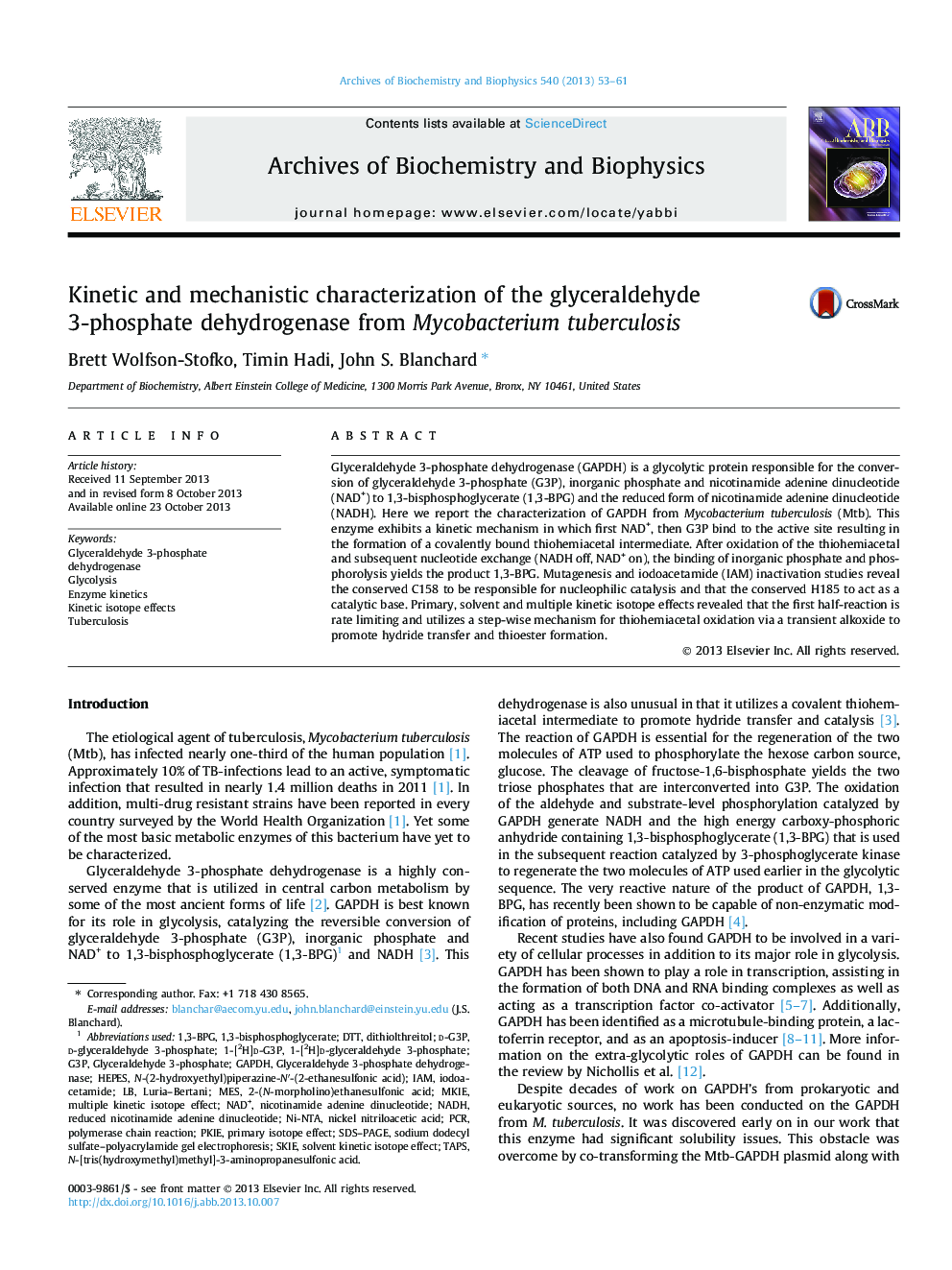| Article ID | Journal | Published Year | Pages | File Type |
|---|---|---|---|---|
| 8290439 | Archives of Biochemistry and Biophysics | 2013 | 9 Pages |
Abstract
Glyceraldehyde 3-phosphate dehydrogenase (GAPDH) is a glycolytic protein responsible for the conversion of glyceraldehyde 3-phosphate (G3P), inorganic phosphate and nicotinamide adenine dinucleotide (NAD+) to 1,3-bisphosphoglycerate (1,3-BPG) and the reduced form of nicotinamide adenine dinucleotide (NADH). Here we report the characterization of GAPDH from Mycobacterium tuberculosis (Mtb). This enzyme exhibits a kinetic mechanism in which first NAD+, then G3P bind to the active site resulting in the formation of a covalently bound thiohemiacetal intermediate. After oxidation of the thiohemiacetal and subsequent nucleotide exchange (NADH off, NAD+ on), the binding of inorganic phosphate and phosphorolysis yields the product 1,3-BPG. Mutagenesis and iodoacetamide (IAM) inactivation studies reveal the conserved C158 to be responsible for nucleophilic catalysis and that the conserved H185 to act as a catalytic base. Primary, solvent and multiple kinetic isotope effects revealed that the first half-reaction is rate limiting and utilizes a step-wise mechanism for thiohemiacetal oxidation via a transient alkoxide to promote hydride transfer and thioester formation.
Keywords
Related Topics
Life Sciences
Biochemistry, Genetics and Molecular Biology
Biochemistry
Authors
Brett Wolfson-Stofko, Timin Hadi, John S. Blanchard,
